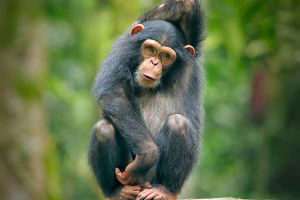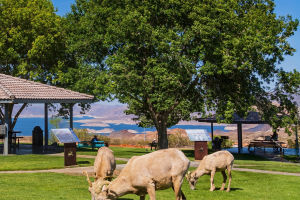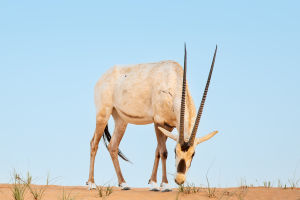Seals have always fascinated us with their charming looks and gentle nature. These marine mammals, with their smooth, round bodies and powerful flippers, bring a special warmth to the vast, sometimes cold ocean.
As important players in the marine ecosystem, seals live across the world—from the frozen Arctic and Antarctic seas to warmer coastal waters.
Today, we invite you to join us in exploring their lives in more detail: how they survive, what challenges they face, and how we can all play a part in protecting them.
The Physical Design of Seals: Built for the Ocean
One of the first things we notice about seals is their sleek, streamlined bodies. Their limbs have evolved into broad flippers that help them glide through water with surprising speed and grace. Unlike many land animals, seals can hold their breath underwater for several minutes, allowing them to dive deep in search of food.
Their sharp eyesight and sensitive hearing enable them to detect prey and threats even in dim or murky waters. This combination of physical features makes seals excellent hunters and survivors in the ocean environment.
Seals' Feeding Habits and Daily Life
Seals are top-level predators in their food chain. Their diet mainly consists of fish, but they also feed on crustaceans such as lobsters and shrimp, and cephalopods like squid and octopus. Depending on the species and location, some seals even hunt in groups to improve their chances of catching food.
We can picture a seal diving beneath the surface, quickly chasing a school of fish, then using its sharp teeth to catch the meal. These feeding habits require stamina and skill, and seals have both in abundance.
Breeding is another critical part of seal life. Most seals breed once a year, often in colder months like late winter or early spring. Female seals give birth to pups on ice floes or rocky shores and stay close to them for weeks, nursing and protecting them. Meanwhile, male seals patrol territories and fend off rivals to keep their families safe.
This team effort in raising young seals strengthens the bonds within their groups and ensures the survival of the next generation.
The Long Journeys: Migration and Movement
Seals are known for their impressive migrations. To find richer feeding grounds and avoid harsh weather, many seal species travel thousands of miles. For example, some Arctic seals migrate southward during the winter to escape freezing temperatures and scarce food. This journey is not just a physical feat but also a sign of their adaptability.
By moving with the seasons, seals maintain healthy populations and avoid areas that would be too dangerous or barren for survival.
Tracking these migrations has become a key way for scientists to understand seal behavior and how they respond to environmental changes. It also shows us the importance of protecting different ocean regions that seals depend on throughout the year.
Facing Growing Threats in a Changing World
Despite their adaptability, seals are facing serious challenges. One of the biggest is climate change. As global temperatures rise, polar ice caps and glaciers are melting at alarming rates. Since many seals rely on stable ice for breeding and resting, this loss threatens their survival directly.
Without solid ice platforms, pups have nowhere safe to be born and raised.
Human activity adds to these pressures. Overfishing reduces the availability of fish, making it harder for seals to find enough food. Pollution from plastics, chemicals, and oil spills harms the health of seals and the overall ocean environment. Noise pollution from ships and industrial activities can also disturb seals' communication and navigation.
It's clear that seals' survival is tied closely to the health of the oceans and the actions we take to protect them.
Why Protecting Seals Benefits Us All
Seals play an essential role in keeping ocean ecosystems balanced. They help control fish and invertebrate populations, which supports the health of coral reefs and other marine habitats. When seal numbers drop, it can create a ripple effect that harms many other species.
Beyond ecology, seals have great cultural and economic value. They attract tourists and nature lovers, boosting local economies through eco-tourism. Watching seals in their natural habitat inspires people to care more about the environment.
Moreover, seals act as sentinels for the ocean's health. Changes in their populations or behavior often signal wider problems like pollution or climate shifts—problems that will eventually affect human communities as well.
How We Can Help Protect Seals
Protecting seals requires a mix of actions. Strong laws and regulations can limit harmful fishing, control pollution, and protect critical habitats like breeding grounds. We can support these efforts by voting for policies that prioritize ocean conservation and holding industries accountable.
Education also plays a key role. When communities and visitors learn about seals and their importance, they become more motivated to support protection measures. Sustainable tourism offers a way to enjoy wildlife while minimizing human impact. Responsible tours help fund conservation and spread awareness without disturbing seals.
Scientific research is another vital tool. By studying seal behavior, health, and migration, scientists can recommend better ways to protect them and monitor how they respond to changing environments.
Finally, creating and maintaining marine protected areas gives seals safe places to live and breed, away from the threats of human activity. These "ocean refuges" are essential for maintaining healthy seal populations.
Joining Hands for a Healthier Ocean Future
Protecting seals is a shared responsibility across countries, communities, and individuals. International cooperation is vital because seals migrate through many regions and depend on vast ocean spaces. When we work together—sharing knowledge, resources, and passion—we increase the chances of success.
At the same time, each of us can contribute by supporting ocean-friendly practices and spreading the word about seal conservation. The future of seals, and of our oceans, depends on all of us.
Let's unite to protect these beautiful marine creatures and the ocean they call home. What ideas or actions do you think can make the biggest difference for seals? We'd love to hear your thoughts. Together, we can ensure a thriving, vibrant ocean for generations to come.


